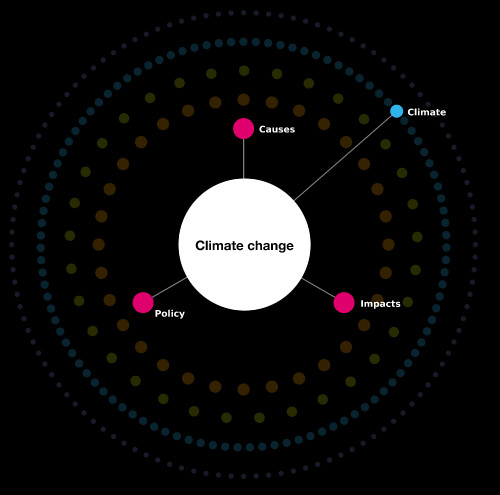
By clicking any link on this page you are giving your consent for us to set cookies. More info
secondary-science

This tool is best used on a laptop or other larger screen and may not function correctly on a phone.

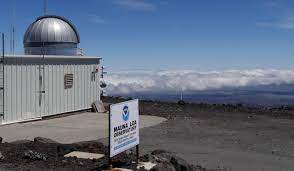

An exam style question suitable for GCSE science.
The units for the data are in fact ppmv which we have simplified to ‘parts per million’ for this question.
This is a nice visualisation of what 420ppmv looks like.
The questions explore the fact that there is a seasonal cycle in carbon dioxide in the atmosphere because plants take up carbon dioxide during photosynthesis in the spring and summer, which is then released back into the atmosphere when plants die and leaves rot in the autumn and winter.
Carbon dioxide is a well mixed gas, meaning that the data recorded at Mauna Loa is representative of the Northern Hemisphere, and that at the South Pole is representative of the Southern Hemisphere.
The seasons are out of phase with each other – when it is summer in the Southern Hemisphere, it is winter in the Northern Hemisphere.
As there is far less vegetation in the Southern Hemisphere than in the Northern Hemisphere, the seasonal cycle is much smaller.
Students may notice that there could also be a human element to the cycle – we burn more fossil fuels in the winter than in the summer (and there are also fewer people in the Southern Hemisphere).
The correct answer for the mean is 416.1 parts per million.
As well as the seasonal cycle, the graph provided shows the increase in atmospheric carbon dioxide since 1958. This increase is because of the emissions of carbon dioxide by human activities including land use change including deforestation, burning fossil fuels and cement production.

https://scrippsco2.ucsd.edu/data/atmospheric_co2/spo.html
https://gml.noaa.gov/webdata/ccgg/trends/co2/co2_mm_mlo.txt
https://climate.nasa.gov/vital-signs/carbon-dioxide/
NOAA/ Susan Cobb



A diverse range of questions based on applications of physics in weather and climate, including sea level rise, radar frequencies, aerosols, oceanic circulation, tidal barrages etc.
Isaac Physics is an online study tool developed by the University of Cambridge. Isaac Physics questions are self marking practice questions for secondary school and undergraduate scientists.
Isotrope Concentrations and Ocean Circulation
Radar wavelengths and frequencies

Learning Objectives
In its acceptance speech at COP26, Egypt celebrated its renewable energy resources:
This is an extract from https://unfccc-cop26.streamworld.de/webcast/closing-plenary-of-the-cop-followed-by-cmp-and-c-2 from 09:20
‘Egypt transitioned from the traditional energy sources to renewable, more sustainable and planet-friendly energy sources…’
One of these resources is the huge Benban solar farm.
Watch the relevant part of the COP26 plenary video and/ or


images from google maps
Discussion point: What is a kWh? (if 1 kWh is the electrical energy converted by a 1 kW appliance used for 1 hour rephrase this in terms of electrical energy generation. See https://www.bbc.co.uk/bitesize/guides/z2h4dxs/revision/1 for more detail)
Discussion point: So what is a kWh/ m2?
Extension: Express this answer as a proportion or percentage
(37.2km2 = 37 200 000m2 so 2366 x 37 200 000 = 88,015,200,000 kWh = 88 015.2 GWh = 88.0TWh)
Discuss: kilo, mega, giga, Tera etc.
Extension – write this as a proportion or percentage
Discussion – why so much? Solar panels don’t cover the whole of the ground, solar panels are actually less efficient when they get hot, you can see solar panels, so they must be reflecting some of the Sun’s light, not absorbing it all etc.)
(cost = power (kW ) x time (hours) x price (per kWh).
So value = 3, 800, 000, 000 kWh x 2/52 x 28.34 = £41,420,000.
Discussion – is that surprising?
Why might the quantity of electricity produced actually be different? (We started with an annual value, but the seasons and the weather will actually have an impact on how much is produced in a given week).



Calculate the best flight time from A to B and reduce greenhouse gas emissions!
The table below represents a cross section through the atmosphere and gives wind speeds (in m/s) in boxes which are 200km long and 1km high.
Your task is to pilot an aircraft, which flies at 230m/s when it is flying in the less dense atmosphere higher than 5km, and 150m/s when it is flying in the more dense atmosphere lower than 5km, from A to B in the shortest time possible.
Remember, flying in the same direction as the wind increases your speed but flying against the wind slows you down.
Map your route on the chart below and then calculate the flight time!
Rules

Some students may find the following table useful:


In this activity students use current data to investigate the UK’s energy sources.
Go to gridwatch.co.uk and use the table and the key at the bottom of the page to complete the following table. This website shows you where the UK’s electric power is coming from and what the total demand (use) is and has been over the past year.
(1 GW = 1 000 000 000W)

Extension
By looking at the total energy demand, and the production by wind energy, what can you deduce is the purpose of gas turbines?
Can you see any correlation between wind output and gas turbine output?
Opportunity for Group Work
Make a poster or presentation showing what you have learned.
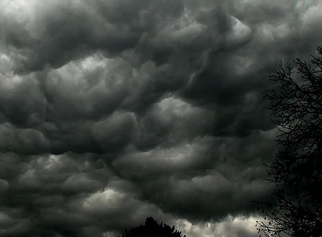
In this activity, students will test the hypothesis that “When the clouds are darker, more of the Sun’s light has been scattered and so less light reaches the ground”
Advice for teachers
Ideally, this activity should be carried out over a week or longer. This could mean that different classes contribute towards collecting the data.
You will need
Advice

Extension
Draw a graph which shows light level against grey scale number

Questions


We can’t see or feel atmospheric pressure but rely on barometers to tell us how the pressure is changing.
Pressure changes with altitude. Changing weather patterns can also lead to changing atmospheric pressure.
For these exercises, you will need to download the phyphox app onto your phone or, if you are working in small groups, onto one person’s phone.
You will also need a tape measure (5m) and access to an open stairwell – the higher, the better!

Using the following information, calculate the theoretical atmospheric pressure at the surface of the Earth:
Total mass of the atmosphere: 5 x 1018kg
Radius of the Earth: 6370km (OR surface area of Earth = 5.1 x 10 14 m2)
Gravitational field strength, g = 10 ms-2
Pressure = force/ area
Pressure = mass x g/ (4 pi r2)
Pressure = (5 x 1018 x 10)/ (5.1 x 10 14)
Pressure = 98057 Pa
Alternative units: 1hPa = 100 Pa
1 millibar (mbar) = 1 hPa
Now open the app and select pressure:

Now use the forward arrow to start measuring the pressure:

Record the current air pressure in your classroom in Pa __________________________________
What proportion of the theoretical atmospheric pressure you calculated above it this (express your answer as a percentage)?___________________________
Move to an open stairwell and complete the following table, using a tape measure to record the vertical distance you have ascended between each measurement you make. Make sure that you make your first measurement at floor level.

Now draw a graph of change in atmospheric pressure (dependent variable) against height (independent variable).

Complete the following sentence “A pressure change of 1hPa indicates an altitude change of ____m”.
Extension Questions
Many smart phones, watches etc. are equipped with pressure sensors so that they can be used to calculate altitude.
1) If you used a phone (in flight safe mode) to measure the pressure inside an aeroplane in flight, why won’t it give you an accurate indication of the height you are flying at?
2) You are on a many-day expedition to the Himalayan mountains and you are using the pressure sensor in your watch to tell you how high you are. Why would it not be safe to rely on this information?
(resources created from ideas on https://phyphox.org/)
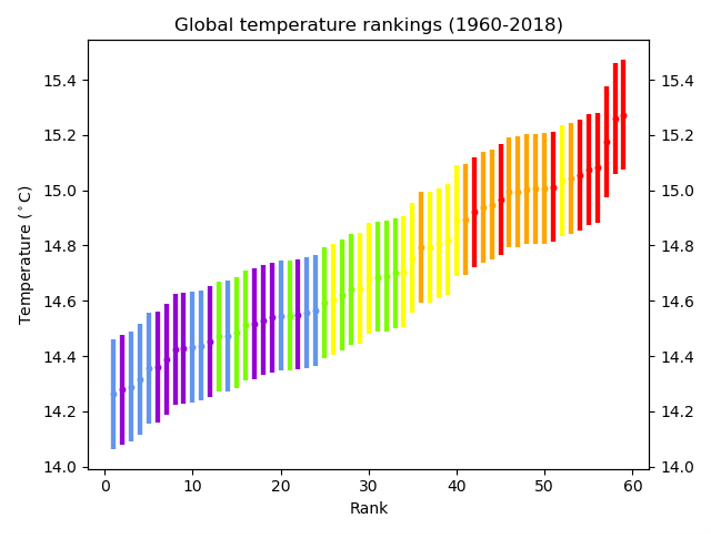

These resources are designed to be used in one session with year 6 (10/ 11 year old) students. Although they will support numeracy, literacy and various other aspects of the curriculum, they are designed to prepare students for secondary school rather than support the year 6 curriculum.
There are 6 suggested activities. Although they are designed to be run sequentially, you may choose to use only some of the activities, or to supplement them with your own ideas.
You may like to ask them to summarise their learning after each activity – this could be on post it notes on a cloud, or …
It should be possible to use these activities with any class size.
Many people, including Ellie Highwood, Cristina Charlton-Perez, Helen Johnson and Laila Gohar, have contributed to these resources.
Time: 30 minutes
You will need: Weather or Climate.pptx, one printed copy of Weather or Climate.docx for each pair of students and two dice per pair of students.
a) Show the images in the PowerPoint presentation and ask the students what each image shows and whether it is ‘weather’ or ‘climate’. Some may not have a clear answer!
b) Ask the students to get into pairs and give each pair one sheet and two dice.
c) Give them 5 minutes to roll both dice and record the combined score each time they roll as a tally chart.
d) Optional: ask them to turn this tally into a bar chart on the graph paper provided.
e) Can they predict what number they would roll next, if they had the chance?
f) Talk about how the graph shows the most likely score (the climate) but also the complete range of possible scores (the weather). What scores are ‘extreme’?
g) What happens to the numbers if the ‘1’ on one of the dice is changed into a ‘7’?
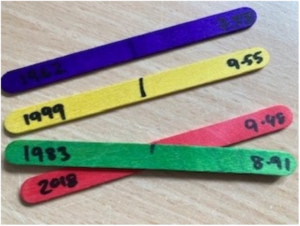
Time: 30 minutes
You will need: 120 multicoloured lollipop sticks (at least 10 sticks each of 6 colours), Climate_Change_Picture.pptx, lollipop.xls, blue tack or similar
Note: this probably works best with groups of about 6 students working on each graph, with larger groups more teacher involvement will be required to keep the whole group engaged.
a) Before the event, mark on the middle of each lollipop stick. On each stick, write the year and the temperature for one of the data points in the spreadsheet (e.g. 1970 14.47), differentiating between global and CET data. Use a different coloured lollipop for each decade – so the 60s are all one colour etc.
b) You’ll also need to print a blank graph – the document supplied will work on A3 paper.
c) Divide the students into two groups. Within each group, divide out the lollipop sticks.
d) They should then work together to stick the sticks to the graphs in the right places, using the line in the middle of the stick as the marker.
e) Whilst doing so, they can look at years that mean something to them – the year they were born, their parents were born etc.
f) When they’ve finished, ask them to complete the table on the ppt
g) What does their graph show? What surprises them? What are the similarities and differences between the graphs?
h) Optional: take the sticks back off the graph and, within their groups, line the sticks up in temperature order with the coldest on the left and the warmest on the right. What does this show?
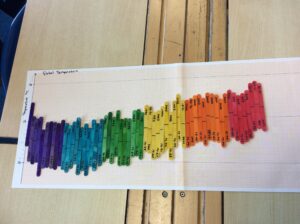
Time: 30 – 60 minutes
You will need: Lucky dip bag of things that have some link (vague or otherwise) to climate change. Each group takes an object, and then together works out what the connection is. After 10 mins groups swap
objects until all groups have seen all objects. (You could make a simple worksheet with a box for them to write their ideas for each item).
At the end – ask for feedback on each object and give them the “correct answer” – this can take a while – if you have 4 objects, this would make a 60 minute activity. I think they lose interest after 4 objects.
Example objects, depending on what you have available. Try and use objects which have both obvious and higher level ideas associated with them. Try and balance ‘doom and gloom’ with ‘opportunity and hope’ ideas.
Toy car: Emissions of greenhouse gases, also ozone and air pollution. Move talk
onto electric vehicles, nighttime charging etc.
Tree ring slice: Tree rings are an indirect way of measuring our climate etc, trees remove
carbon dioxide from the atmosphere, forestation and deforestation.
Cuddly cow: Methane – but you could also talk about the climate impact of beef etc. as
that is now much more talked about.
Butterfly brooch: Most of the kids talk about different species adapting to climate change (they do evolution in year 6) but you can also refer to chaos and internal links between different parts of the climate system
Mini trainer shoe: Some “air” trainers used to have SF6 in which is a really strong
greenhouse gas. You could also use baby shoes to represent babies and population growth. Also transportation – where were these shoes made?
Mirror: Geo-engineering and space mirrors – but can also explain albedo in this
way.
Solar powered toy: Renewable energy sources
Windmill: Renewable energy sources, changing weather patterns
Bag of rice: Methane production, plants as absorbers of CO2
Cuddly polar bear, puffin or other iconic animal threatened by climate change.
Sponge: Link to bleaching coral reefs and plankton as photosynthesisers equivalent to land plants.
Chocolate bar: Clearing of rainforests for production and threat to cocoa plants as
temperature rises.
Bottle of frozen water: Melting glaciers and ice caps; link to albedo and positive feedback;
hydrogen fuel
Piece of charred wood: Sustainable fuels; increased forest fires.
Time: 30 minutes
You will need: money.docx printed in colour, WeatherRiskGame.pptx, 6 dice – large ones which the whole class can see work best. I got some foam ones very cheaply.
a) Before the event, mark the dice ‘p’ and 1-5. On the die marked 1, cross out or otherwise mark one side, on the die marked 2 cross out or otherwise mark two sides etc. Crossed-out sides represent good weather and sides which aren’t crossed out represent bad weather. The more sides are crossed out, the lower the chance of bad weather!
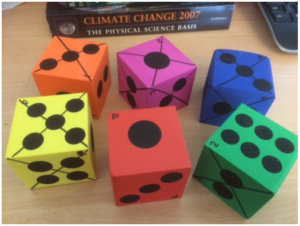
b) Use the ppt to guide the activity.
c) The students will need to get into 6 groups. Give each group one colour of money and ask them to cut it up. You should keep the ‘insured’ slips.
d) Each time you play, roll the P dice first. On the basis of which side it shows, the students should decide whether to insure their businesses or not (if a 6 is shown, then there is no chance of bad weather and presumably no-one will insure). If they choose to insure, they should pay you the appropriate sum in return for an ‘Insured’ slip. Then, roll the appropriate die (so if the P die gave a 3, next roll the die labelled 3). If a crossed-out side is rolled, then anyone who was not insured should pay you the appropriate sum.
e) Collect in all the insured slips and start again.
f) Continue until either one team, or all teams except one are out, depending on time.
Time: 2.5 hours
You will need: Laptop and projector (for PowerPoint)
Whiteboard or flipchart for recording “purchases” by teams and competition results
5 or 6 small ziplock bags containing soil or sand and representing the crops of the garden.
Large and deep plastic box for use as “lake”
Towels
Access to water
Bundles of building materials e.g. plastic straws, lolly sticks, willow sticks, elastic bands, string, corks
Tape dispenser and scissors for each team
Additional materials for teams to “purchase” e.g. small plastic bottles with lids, plastic trays, bubble wrap, bags (anything else you can think of).
Topic: Flooding and climate change, developing world, adaptation.
Skills: teamwork, raft building, communication, budgeting, testing
Based on the Flooding Gardens activity from Practical Action.
Summary:
• Short powerpoint on flooding and impact of climate change. (15 mins)
• Set up problem of agriculture in Bangladesh (5 mins)
• Design and build of floating garden rafts according to specification in the power point (see also
below) – 40 mins including one opportunity for testing design
• Public competition – 20 mins
• Final few slides on real life application – 10 mins
Plus need a bit of time to set up in advance and definitely some to pack / clear up afterwards
Raft building part:
Each team needs to build a raft that could hold a floating garden. The winner is the team that builds a raft that can hold the most weight (small bags of soil) without the top surface of the raft being inundated with water. If using the budgeting version, secondary awards for cheap designs that work (although maybe not quite as well as the expensive ones).
Students are provided with a bag containing e.g. straws, willow sticks, elastic bands, sellotape dispenser, scissors, corks, lolly sticks. These represent “free” and available materials.
Also available are plastic bottles, plastic trays, bubble wrap and anything else you can think of – but these are kept at the front and have a price attached to them. The actual value you give them is arbitrary but they are supposed to represent things that are scarce in the communities we are considering. For example, plastic bottles might represent sealed oil drums, bubble wrap might be tarpaulins etc.
(Note, all materials can and should be recovered at the end of the session – the rafts are broken down and materials reused on other occasions).
With a year 6 group, you should be able to get them to discuss and draw out their design as a team first (maybe first 10 mins of building section), then send one person to get what they need (including paying – I haven’t given them a budget as such, just kept a record of what they have “spent”, but you could give each group a fixed budget if you wanted to (and then judge your winner differently).
Time: 30 minutes
You will need: A playground. Chalk or similar. Hats or sashes (see below).
This playground game demonstrates the way Greenhouse gases return energy to the Earth’s surface – as well as allowing the students to run off some energy!
a) With chalk or similar, mark a Sun and an Earth at opposite ends of the school playground. If possible also draw a line across the playground, a third of the way between the Earth and the Sun.
b) Choose 2 students to be greenhouse gases – if possible give them a hat or sash to identify them.
Which greenhouse gases have they heard of? One could be water and the other carbon dioxide.
They are allowed to move only along the line you have drawn. Their role is to try and touch the other students as they run past but only when they are running from the Earth towards the Sun!
c) The other students are all ‘energy’ and start off by the Sun.
d) The ‘energy’ should run to the Earth and back again, repeatedly. If the ‘greenhouse gas’ students manage to touch them, then they have to run 10 times between the greenhouse gas line and the Earth before being allowed to return to the Sun.
e) After a few minutes of doing this, stop the students and increase the numbers of ‘greenhouse gas’ students – you could add a methane, or another water.
f) Again, let them play this for a while, then stop them and ask what has changed. They should notice that there is now more ‘energy’ trapped near the Earth.
g) You could increase the amount of greenhouse gas again and let them see what happens.
h) Finish by talking about how greenhouse gases are essential to maintaining our climate, but that increasing the amount of greenhouse gas leads to heating. You may need to talk a little bit about the different forms energy can take – light, heat etc.


Resource produced in conjunction with Sustainability Physics.
This could be used as a starter exercise: Can students do the whole question at once given only the radius of the Earth, the temperature rise and the specific heat capacity of sea water?
© 2024 Royal Meteorological Society
RMetS is a registered charity No. 208222
By clicking any link on this page you are giving your consent for us to set cookies. More info
Strictly Necessary Cookie should be enabled at all times so that we can save your preferences for cookie settings.
If you disable this cookie, we will not be able to save your preferences. This means that every time you visit this website you will need to enable or disable cookies again.